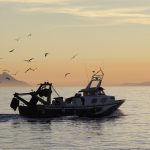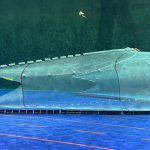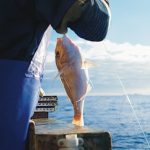Recreational fishers are being asked to provide more help with vital research, to monitor the sustainability of iconic “bottom dwelling” (demersal) finfish along the West Coast.
Many of the species like dhufish and baldchin groper are only found in WA.
Researcher Dr David Fairclough said it was vital the recreational sector provide more fish frames to assist in determining the ongoing status of these at risk species. The frame is the head to tail skeleton of the fish, containing the guts and gonads, left behind after filleting.
“The West Coast Bioregion has four separate zones and we need samples from recreational fishers in each of these zones, but especially in the metropolitan region where they now have exclusive access,” Dr Fairclough said.
“Given that the Metro zone is exclusively managed for recreational fishing, the onus is on recreational fishers themselves to step up to the mark and assist with research efforts on this highly valued fishery.”
Dr Fairclough said the frame collection program to date indicated there may be virtually no dhufish and pink snapper left that would be over 20 years of age, which was a major concern given that those species have been known to live to at least 40 years of age.
“From the fish frames we have also learnt that successful spawning and recruitment for dhufish and pink snapper is highly variable, which is one of the reasons this fishery needs to be closely monitored,” he said. “At least 500 dhufish, pink snapper and baldchin groper frames need to be collected for each zone. Donating frames to research is the easiest way for recreational fishers to help improve our understanding of this fishery.
“If we don’t get the frames our understanding of the fishery will be unclear and the Department of Fisheries may be forced into a more precautionary management approach.”
Dr Fairclough said recreational fishers were being offered prize incentives for donating their frames and information needed, like contact details, locations where the fish were caught, the catch date and other data to help researchers complete the stock assessment.
“Our scientists make measurements of the fish frames and remove the fish’s ear bones (otoliths),” he said. “We use the otoliths to work out the age of individual fish and generate the age structure of the fish population to estimate the fishing mortality rate.”








